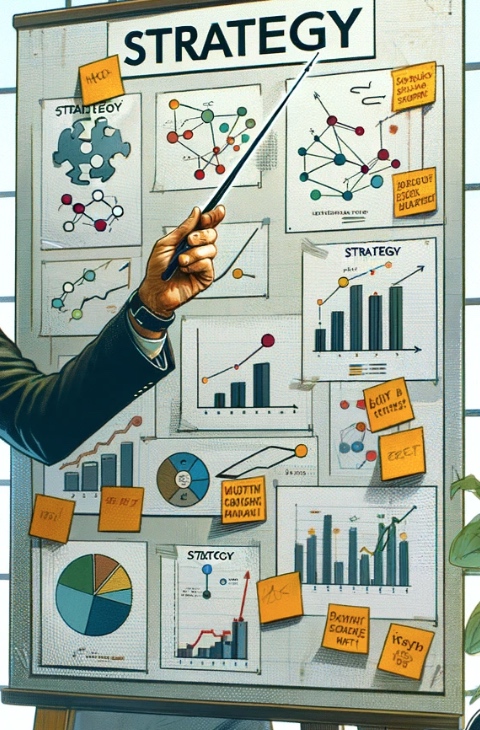Business Strategy Definition
A business strategy is the high-level plan that guides an organization toward long-term success. It sets out the strategic planning process that aligns goals, resources, and actions to deliver superior value to customers, inspire and retain employees, and build strong supplier relationships. A well-crafted strategy is the blueprint for creating and sustaining a competitive advantage in any industry.
The Core of Value Creation
At the heart of every winning strategy is value creation—increasing the gap between the price customers are willing to pay and the cost of delivering that value. The most successful companies achieve this by:
-
Enhancing customer satisfaction through innovation, superior quality, or unique experiences
-
Driving operational efficiency to reduce costs while maintaining value
-
Building strong, mutually beneficial relationships with suppliers and partners
This approach, often illustrated by the “value stick” concept, shows how improving both customer delight and business profitability strengthens the organization’s market position.
The Strategic Planning Process in a Changing World
In today’s fast-moving markets, a static strategy quickly becomes outdated. The most effective organizations treat strategic planning as a continuous, adaptive process. This involves:
-
Regularly revisiting goals and market assumptions
-
Tracking disruptive trends and emerging opportunities
-
Involving cross-functional teams in decision-making
-
Making timely adjustments to maintain or grow competitive advantage
By staying agile, businesses can navigate uncertainty and seize opportunities faster than competitors.
Evolution of Strategy Frameworks
Over the decades, strategy frameworks have evolved alongside market complexity:
-
1950s–1960s: SWOT analysis and experience curves focused on internal strengths and efficiency
-
1970s: BCG Matrix and GE/McKinsey Matrix emphasized portfolio management and resource allocation
-
1980s: Porter’s Five Forces provided a method to analyze industry competition and profitability
-
1990s onwards: The Value Net Model expanded strategy to include “complementors” and broader ecosystem thinking
This shift reflects a move from rigid planning to dynamic, interconnected models that address the realities of modern business.
Three Strategic Questions Every Business Must Answer
A robust business strategy addresses:
-
How do we deliver exceptional value to customers?
-
How do we attract, retain, and empower employees?
-
How do we create sustainable partnerships with suppliers and collaborators?
These questions form the foundation of a balanced and resilient value chain.
Why a Strong Business Strategy Matters
Without a clear strategy, companies risk reactive decisions, wasted resources, and loss of market share. A well-defined business strategy:
-
Sets a clear direction for growth and innovation
-
Focuses investments on the highest-value opportunities
-
Creates alignment across all levels of the organization
-
Strengthens resilience against competitive threats
Final Word
Strategy is more than a written plan—it is an ongoing commitment to making deliberate choices that position a business for long-term success. By focusing on value creation, staying agile through the strategic planning process, and applying proven strategy frameworks, companies can secure a durable competitive advantage in today’s evolving marketplace.







